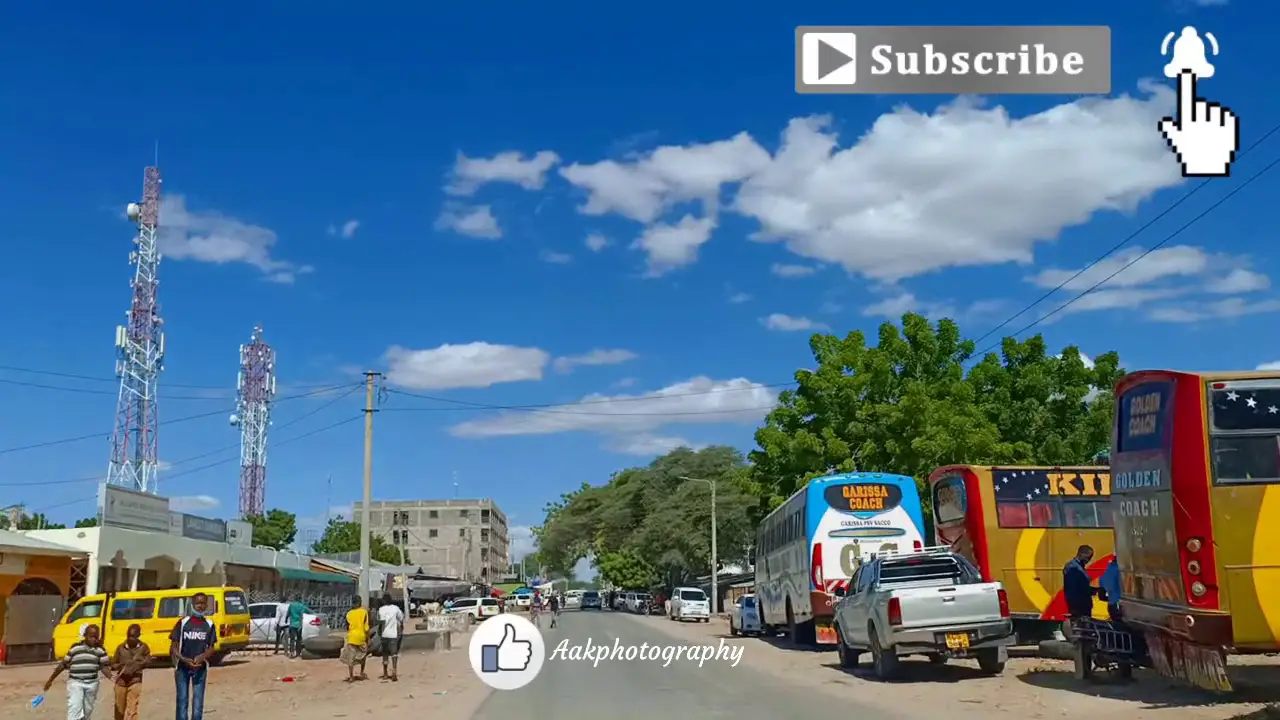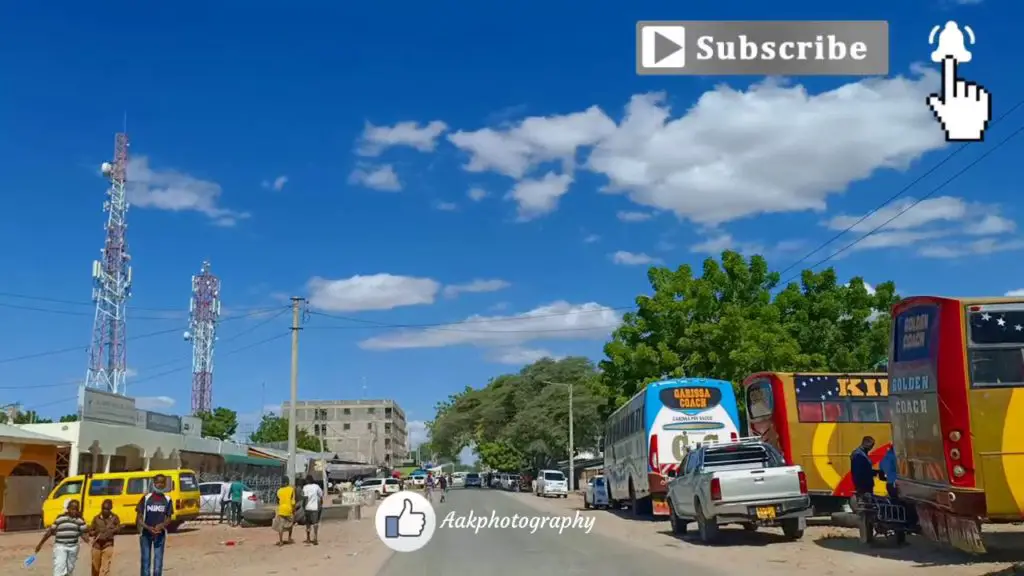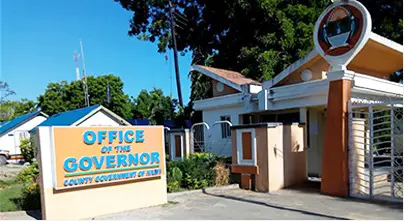Garissa Town, a vibrant and bustling hub in northeastern Kenya, beckons you with its rich cultural heritage and warm hospitality. Nestled along the scenic banks of the Tana River, this remarkable destination offers a blend of traditional African charm and modernity. From exploring the vibrant local markets teeming with colorful fabrics and exotic spices, to immersing yourself in the rhythm of traditional music and dance, Garissa Town is a treasure trove of authentic experiences. Whether you’re craving a taste of authentic Somali cuisine or eager to discover the ancient ruins that dot the surrounding landscape, your visit to Garissa Town will be a captivating journey into the heart of East Africa.
History of Garissa Town
Garissa Town, located in the northeastern part of Kenya, has a rich history that dates back centuries.
Early settlement
The area where Garissa Town now stands was originally inhabited by the Aulihan clan of the Somali people. They were pastoralists who moved their livestock from one place to another in search of water and pasture. This nomadic way of life shaped the early settlement patterns in the region.
Growth and expansion
By the 19th century, Garissa had become a hub for trade and commerce due to its strategic location along the Tana River. Arab traders from the coast would travel inland to Garissa to exchange goods with the local communities. This brought about cultural exchange and economic growth in the town.
Impact of colonial rule
Garissa Town was greatly affected by the arrival of the British colonialists in the late 19th century. The construction of the railway line from Mombasa to Uganda played a significant role in the town’s development. The town became a major trading center and a stopover point for both traders and travelers along the railway line.
Post-independence era
Garissa Town continued to grow and expand after Kenya gained independence in 1963. The government invested in infrastructure development, such as roads and schools, to improve the living standards of the residents. The town became an administrative center for the region and played a crucial role in the economic and political development of the area.
Recent development
In recent years, Garissa Town has experienced significant development in various sectors. Infrastructure projects, such as the construction of new roads and the expansion of the airport, have improved connectivity to other parts of the country. The town has also seen the establishment of more educational institutions and healthcare facilities, enhancing the quality of life for its residents.
Geography and Location
Garissa Town is located in the Garissa County of Kenya, in the northeastern part of the country.
Location in Kenya
The town is situated approximately 350 kilometers northeast of Nairobi, the capital city of Kenya. It is strategically located along the Tana River, which provides a valuable water resource for the region.
Bordering counties
Garissa County shares borders with several other counties, including Wajir County to the northwest, Tana River County to the south, and Lamu County to the east. These neighboring counties have cultural and economic ties with Garissa, contributing to the region’s diversity and growth.
Physical features
The town is situated in a semi-arid region, characterized by vast stretches of dry and arid landscapes. The Tana River, which runs through the town, is a prominent physical feature. The river supports various activities such as irrigation for agriculture and provides a natural habitat for wildlife.
Climate and weather
Garissa Town experiences a hot and dry climate, with temperatures often exceeding 35 degrees Celsius (95 degrees Fahrenheit) during the day. The town receives minimal rainfall, with the rainy season occurring between March and May. The arid climate has influenced the local economy and lifestyle of the residents, with most engaging in activities such as livestock farming that are suited to the climatic conditions.
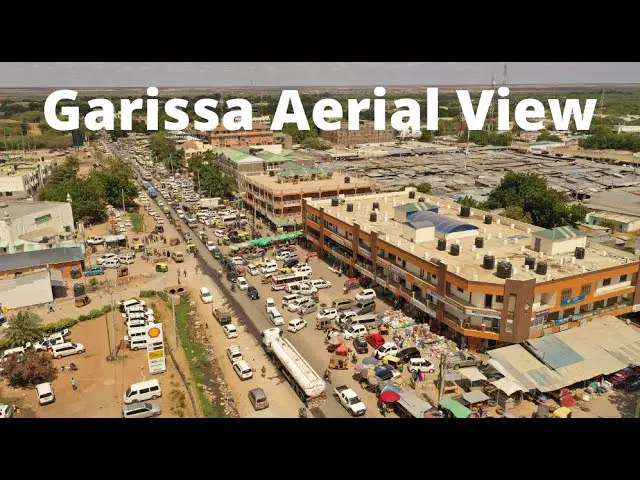
Demographics
Garissa Town is home to a diverse population, consisting of various ethnic groups and religious communities.
Population
As of the latest census, Garissa Town has a population of approximately 200,000 people. The population has been steadily increasing due to natural growth and internal migration from other parts of the country.
Ethnic composition
The town is a melting pot of different ethnic groups, with the majority being ethnic Somalis. Other ethnic groups include the Borana, Orma, Pokomo, and Kamba communities. The diverse ethnic composition contributes to the cultural richness and social cohesion of the town.
Religious diversity
Garissa Town is predominantly Muslim, with Islam being the major religion practiced by the residents. Mosques are scattered throughout the town, and Islamic teachings and traditions play an integral role in the daily lives of the residents. However, there is also a presence of other religious communities, including Christians and traditional African religions.
Languages spoken
The primary language spoken in Garissa Town is Somali, with various dialects being used. English and Swahili are also widely spoken, especially in educational and commercial settings. The linguistic diversity reflects the town’s vibrant multicultural atmosphere.
Economy
Garissa Town has a diverse economy, with various sectors contributing to its growth and development.
Agriculture
Despite the arid conditions, agriculture plays a significant role in the town’s economy. Farmers cultivate crops such as maize, millet, and sorghum using irrigation techniques and water from the Tana River. The government has implemented programs to improve agricultural practices and provide farmers with access to markets and agricultural inputs.
Livestock farming
Livestock farming, particularly camel and goat rearing, is a major economic activity in Garissa Town. The semi-arid environment provides suitable conditions for these animals to thrive. Livestock products such as meat, milk, and hides are not only consumed locally but also sold to other parts of the country, generating income for the residents.
Trade and commerce
Garissa Town has a vibrant trade and commercial sector, fueled by its strategic location along major transportation routes. The town’s marketplaces attract traders from neighboring counties, as well as from other countries such as Somalia. These markets offer a wide range of goods and products, contributing to the local economy and offering employment opportunities for residents.
Tourism potential
Garissa Town has untapped tourism potential, with its rich cultural heritage and proximity to natural attractions. The town’s historical sites, such as the Garissa Railway Station, which played a crucial role during the colonial era, and the Garissa Fort, built by the British to protect the town, can attract history enthusiasts. Moreover, the Tana River provides opportunities for water sports and recreation.
Industrial activities
Garissa Town has recently witnessed the establishment of small-scale industries, which have contributed to job creation and economic growth. These industries include food processing, manufacturing, and construction. Efforts to attract larger industries and promote industrialization are underway, which could further diversify the economic base of the town.
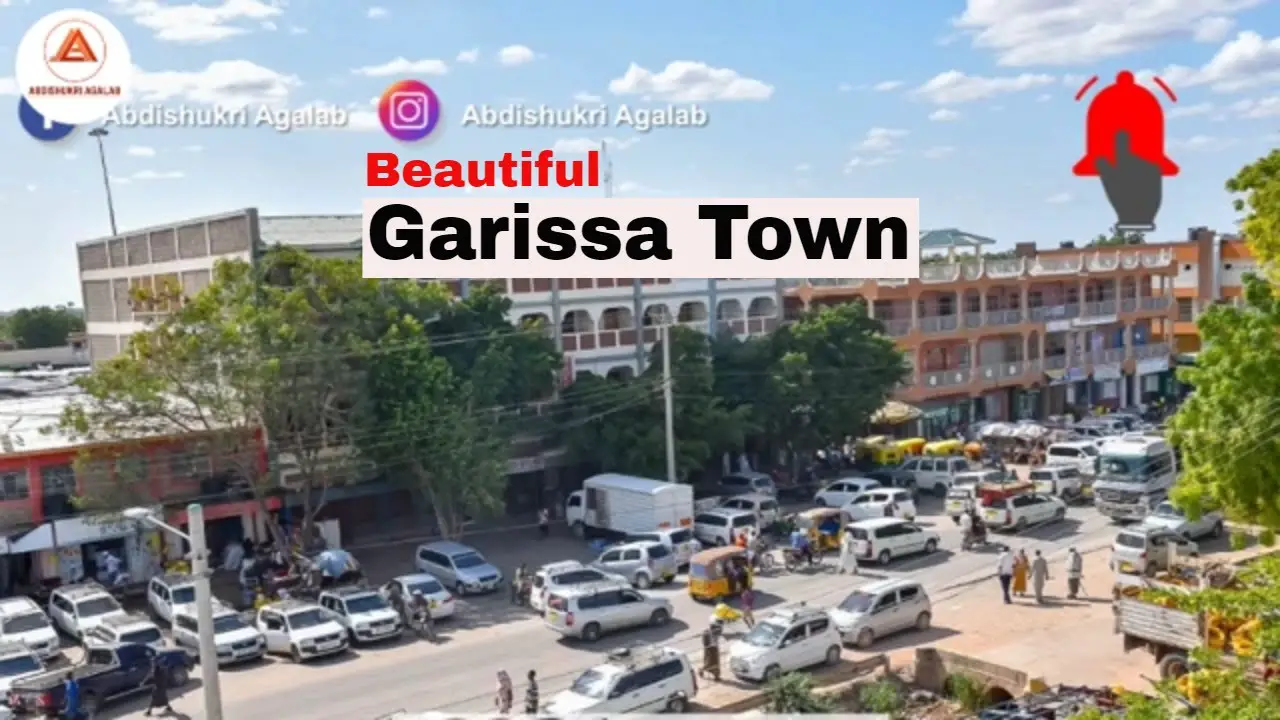
Cultural Heritage
The cultural heritage of Garissa Town is rich and diverse, with a blend of traditions, customs, and artistic expressions.
Traditional customs and practices
The town’s diverse ethnic groups have their unique customs and practices, contributing to a culturally vibrant community. Traditional ceremonies such as weddings and initiation rites are celebrated with great enthusiasm and are an important part of the local culture. Elders play a significant role in preserving and passing down these customs to future generations.
Arts and crafts
Garissa Town is known for its traditional arts and crafts, which showcase the skills and creativity of the local artisans. Handmade woven baskets, camel leather products, and intricately designed traditional clothing are examples of the crafts produced in the town. These crafts serve as an important source of income for the artisans and contribute to the town’s cultural identity.
Festivals and events
Garissa Town hosts various festivals and events throughout the year, celebrating the diverse cultural heritage of its residents. The annual Garissa Cultural Festival brings together different ethnic groups through traditional music, dance, and performances. Islamic festivals, such as Eid-ul-Fitr and Eid-ul-Adha, are also celebrated with communal prayers and feasts.
Cuisine
The local cuisine in Garissa Town is influenced by the Somali and Swahili cultures. Staple foods such as chapati, samosas, and pilau rice are widely consumed. The town’s location along the Tana River also allows for the availability of fresh fish, which is a popular delicacy. Food stalls and restaurants offer a variety of dishes, reflecting the culinary diversity of the town.
Education and Healthcare
Garissa Town places great importance on education and healthcare as fundamental pillars of development.
Primary and secondary schools
The town has a well-developed education system, with numerous primary and secondary schools catering to the educational needs of the residents. These schools provide quality education and are equipped with facilities such as libraries and laboratories. The government has also implemented programs to enhance access to education, especially for marginalized communities.
Tertiary institutions
Garissa Town is home to several tertiary institutions, including Garissa University, which offers a wide range of degree programs. The presence of these institutions has increased access to higher education for the town’s youth, enabling them to acquire the skills and knowledge necessary for the job market.
Health facilities
Garissa Town has a network of healthcare facilities that provide essential medical services to the residents. These facilities include hospitals, clinics, and health centers staffed by trained medical professionals. The government has invested in improving healthcare infrastructure and promoting preventive healthcare measures to ensure the well-being of the community.
Transportation
Garissa Town has a well-connected transportation network that facilitates the movement of people and goods within and outside the town.
Road network
The town is connected to major highways, allowing for easy access to other parts of the country. Roads have been upgraded and maintained to ensure smooth transportation. Local roads within the town, as well as feeder roads to rural areas, have also been improved, enhancing connectivity and promoting economic activities.
Public transportation
Public transportation in Garissa Town primarily consists of buses, matatus (minibusses), and motorcycles. These modes of transport provide affordable and convenient options for residents to travel within the town and to nearby locations. The bus and matatu terminals serve as major transportation hubs, connecting Garissa Town to other major towns and cities in Kenya.
Air travel
Garissa Town has an airport, which facilitates domestic air travel. The airport has regular flights to Nairobi and other cities, providing a quick and convenient mode of transportation for both residents and visitors. This has significantly reduced travel time and increased accessibility to the town.
Infrastructure
Garissa Town has made significant progress in developing its infrastructure to meet the needs of its growing population.
Electricity and power supply
Electricity coverage in the town has significantly improved, with most households now having access to electricity. The government has invested in expanding the power grid and promoting renewable energy sources, such as solar power. This has not only improved the quality of life for the residents but also supported the growth of industries and businesses.
Water and sanitation
Access to clean water and proper sanitation facilities has been a priority for Garissa Town. The government, in collaboration with development partners, has implemented projects to increase access to clean water, especially for rural areas. Efforts have also been made to improve sanitation infrastructure, including the construction of public toilets and the implementation of waste management initiatives.
Telecommunications
Garissa Town is well-connected in terms of telecommunications. Mobile network coverage is extensive, allowing residents to stay connected through calls, text messages, and internet services. The availability of reliable telecommunications has facilitated business transactions, access to information, and communication among the residents.
Housing
The development of affordable housing has been a focus of the local government in Garissa Town. Efforts have been made to improve the availability of decent housing for the residents, with various housing projects being implemented. The construction of low-cost housing units and the provision of mortgage facilities have increased homeownership opportunities and improved living standards.
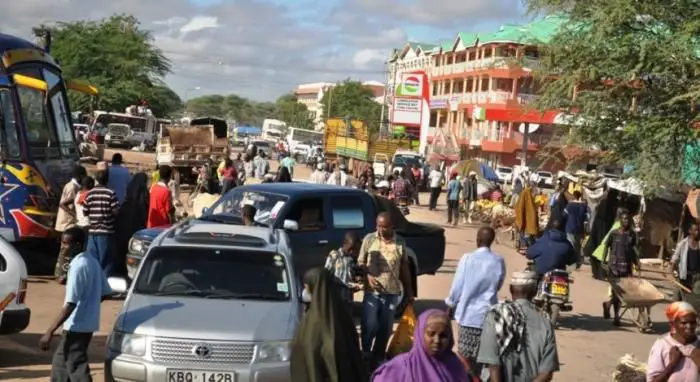
Tourist Attractions
Garissa Town has several tourist attractions that showcase its historical and natural heritage.
Garissa University
Garissa University is a renowned institution, known for its architectural beauty and rich academic environment. The university campus is open to visitors, allowing them to explore the beautiful grounds and learn about the institution’s contribution to education and research in the region.
Cultural sites and museums
The town has cultural sites and museums that offer insights into its history and heritage. The Garissa Railway Station, a relic of the colonial era, stands as a historical landmark. Museums in the town showcase artifacts and exhibits that highlight the cultural diversity and traditional practices of the local communities.
Parks and wildlife reserves
Garissa Town is close to several wildlife reserves and national parks, making it a potential gateway for wildlife enthusiasts. The Boni National Reserve, known for its diverse flora and fauna, offers opportunities for game drives and nature walks. The park also supports conservation efforts, protecting endangered species in the region.
Scenic landscapes
The semi-arid landscapes surrounding Garissa Town offer unique scenic beauty. The Tana River, with its meandering course and lush vegetation along its banks, provides a picturesque setting for various recreational activities such as fishing and boating. The vast plains and rocky outcrops also create a dramatic natural landscape that is worth exploring.
Challenges and Opportunities
Garissa Town faces various challenges, but also presents numerous opportunities for growth and development.
Security concerns
The town has experienced security concerns in the past, primarily due to its proximity to the border with Somalia. Efforts have been made to enhance security through increased surveillance, community policing, and collaboration between government agencies and local communities. Improving security is vital to creating a conducive environment for investment and ensuring the safety of residents and visitors.
Unemployment
Like many towns in Kenya, Garissa Town faces the challenge of unemployment. The lack of job opportunities leads to social and economic disparities within the community. However, the town’s economic potential, particularly in sectors such as tourism and agriculture, presents opportunities for job creation and sustainable economic growth. There is a need for targeted interventions and investment in skills development to address the issue of unemployment.
Access to basic services
Although efforts have been made to improve access to basic services such as education and healthcare, challenges remain, especially in rural areas. There is a need for continued investment in infrastructure development and service delivery to ensure that all residents have equal access to essential services. This includes expanding educational institutions, upgrading healthcare facilities, and enhancing water and sanitation infrastructure.
Investment potential
Garissa Town’s strategic location, growing population, and diverse economic sectors make it an attractive destination for investment. The town has untapped potential in sectors such as agriculture, tourism, and manufacturing. The government, in collaboration with the private sector, should create an enabling environment through favorable policies, infrastructure development, and financial incentives to attract investments and promote sustainable economic growth.
In conclusion, Garissa Town’s history, geography, demographics, economy, cultural heritage, education, healthcare, transportation, infrastructure, tourist attractions, and challenges and opportunities shape its present and future. The town’s progress in various sectors reflects its commitment to development and improving the quality of life for its residents. With continued investment and support, Garissa Town has the potential to become a thriving urban center and contribute to Kenya’s overall growth and development.
